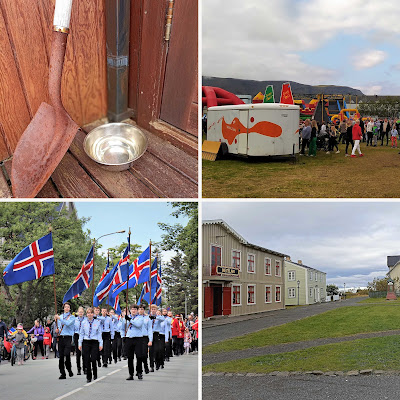Baked curry plokkfiskur
For me, this is one of the most typical Icelandic dishes ever - plokkfiskur, meaning "pounded fish".
The Icelandic housewife used to bring fish and potatoes to the table several times a week, the "staple food" of Icelanders in the past, as both were relatively easily available and reasonably affordable. If there were any leftovers, they were reused - and the next day we had "mashed fish": simply chop up the cooked potatoes and the cooked fish, mix them and heat them with white sauce.
I know you're unlikely to win a beauty prize with this food. And depending on how it's prepared, it can taste bland in the canteen if you're unlucky. But well seasoned and perhaps gratinated with cheese, then Plokkfiskur is really “soul food” for me.
Here I have a version that is beautifully seasoned with cumin and curry, giving it a very special touch - really delicious, I think!
Ingredients for 2 servings
250 g cooked haddock (including white fish)
150 g boiled potatoes
3 Tbsp butter
1 onion
1 tsp curry powder
1 tsp ground cumin
1/2 tsp vegetable broth powder
3 Tbsp flour
420 ml milk
salt and pepper
80 g grated cheese
Preparation
Preheat the oven to 350 °F (180 °C) upper/lower heat.
Chop up the cooked fish and potatoes a little.
Heat a saucepan and melt the butter.
Peel the onion and chop it finely.
Add the chopped onion to the butter along with the grainy vegetable stock and curry powder and fry until the onion pieces become translucent.
Sprinkle the flour over it, stir and then pour in the milk in small portions, stir thoroughly and season with salt and pepper.
Add the potato pieces and the fish to the pan,...
... mix everything carefully and then pour the mixture into a suitable fireproof dish.
Sprinkle the whole thing with the cheese and bake in the preheated oven at 350 °F (180 °C) upper and lower heat for about 10 minutes.
Then serve the plokkfiskur with fresh salad or something similar.
Bon appetit!
[Translated from here.]







.JPG)
.JPG)
.JPG)
.JPG)
.JPG)
.JPG)
.JPG)
.JPG)
.JPG)
.JPG)
.JPG)
.JPG)
.JPG)
.JPG)
.JPG)
.JPG)
.JPG)
.JPG)
.JPG)
.JPG)
.JPG)
.JPG)
.JPG)
.JPG)
.JPG)
.JPG)
.JPG)
.jpg)

.JPG)
.jpg)
.jpg)

.JPG)
.JPG)
.JPG)
.JPG)
.JPG)
.JPG)
.JPG)
.jpg)

.jpg)

.jpg)

.JPG)
.JPG)
.JPG)
.JPG)
.JPG)
.JPG)
.JPG)
.JPG)
.JPG)
.JPG)
.jpg)
.JPG)